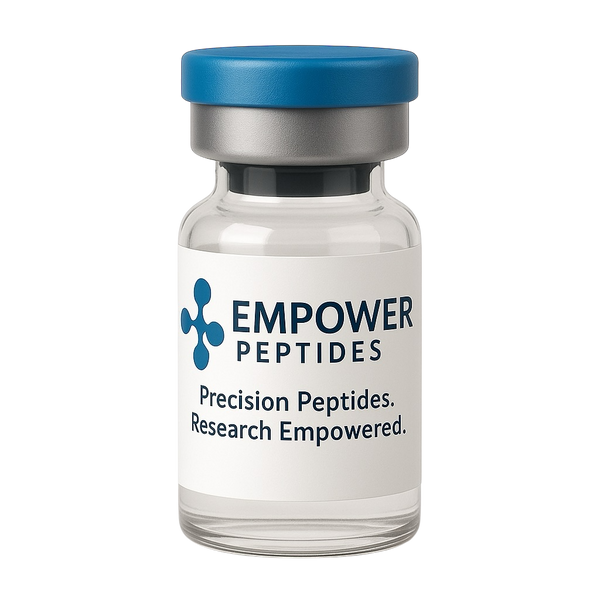
Common Peptide Research Mistakes and How to Avoid Them
Peptide research offers immense potential in the fields of medicine, biology, and performance science. However, even seasoned researchers can fall into common traps that compromise the accuracy and reliability of their results. At Empower Peptides, we believe that success in peptide studies depends on precision, consistency, and awareness of potential pitfalls. Below, we explore the most frequent peptide research mistakes—and how you can avoid them.
1. Using Low-Quality or Impure Peptides
The Problem
One of the most damaging errors in peptide research is working with low-purity compounds. Even small impurities can alter biological activity, skew experimental outcomes, and lead to invalid conclusions.
How to Avoid It
Always purchase peptides from reputable suppliers that provide certificates of analysis (COAs) and purity data verified through HPLC and Mass Spectrometry. At Empower Peptides, every batch is tested for purity, identity, and stability—so you can trust your results every time.
2. Incorrect Peptide Storage and Handling
The Problem
Improper storage—like exposure to light, moisture, or incorrect temperatures—can lead to peptide degradation. This often goes unnoticed until results start showing inconsistencies.
How to Avoid It
-
Store lyophilized peptides at –20°C or below.
-
Avoid repeated freeze-thaw cycles by preparing aliquots for single use.
-
When reconstituting peptides, use sterile, appropriate solvents and follow recommended pH conditions.
-
Label and date all samples clearly to track stability.
Good lab practice protects both your peptides and your data.
3. Inaccurate Reconstitution and Dosing
The Problem
Misjudging the solvent, concentration, or reconstitution process can drastically affect peptide solubility and biological function. Using the wrong buffer or concentration often leads to precipitation or denaturation.
How to Avoid It
-
Consult the peptide’s solubility profile before reconstitution.
-
Use sterile bacteriostatic water, acetic acid, or DMSO, depending on the peptide’s properties.
-
Double-check all calculations for accurate molar concentrations.
-
Mix gently—never vortex—unless specified by the manufacturer.
Precision in preparation ensures consistent and replicable results.
4. Ignoring Stability and Shelf-Life Data
The Problem
Peptides are not indefinitely stable. Many degrade over time, especially once reconstituted. Ignoring shelf-life information can compromise your experiments and waste valuable resources.
How to Avoid It
-
Refer to the manufacturer’s stability data.
-
Use reconstituted peptides within the recommended time frame (typically days to weeks).
-
If longer storage is necessary, aliquot and freeze immediately after reconstitution.
Proper storage extends peptide usability and protects the integrity of your research.
5. Cross-Contamination Between Samples
The Problem
Cross-contamination can occur through shared pipettes, mislabeled vials, or careless bench practices—resulting in corrupted data and inconclusive findings.
How to Avoid It
-
Use dedicated tools for each peptide.
-
Work in a clean, sterile environment and regularly disinfect surfaces.
-
Implement strict labeling protocols and maintain meticulous records.
Attention to detail is a hallmark of reliable peptide research.
6. Neglecting Documentation and Traceability
The Problem
Failing to record lot numbers, preparation details, or experimental conditions can make it impossible to replicate or validate your research later.
How to Avoid It
Maintain a comprehensive lab log with the following details:
-
Peptide name and lot number
-
Reconstitution date and solvent used
-
Concentration and aliquot information
-
Storage conditions
-
Experimental notes
Thorough documentation strengthens scientific integrity and compliance.
7. Not Understanding the Legal and Ethical Guidelines
The Problem
Using research peptides for unapproved human or clinical applications violates ethical and legal standards. This can result in professional and legal consequences.
How to Avoid It
-
Use peptides strictly for laboratory research purposes.
-
Follow institutional, national, and international regulations governing peptide use.
-
Ensure proper labeling: “For Research Use Only. Not for Human Consumption.”
Compliance protects both your reputation and the scientific community.
Conclusion: Accuracy Begins with the Right Partner
Peptide research success depends on meticulous attention to detail—from sourcing and storage to documentation and compliance. By understanding these common mistakes and applying best practices, you can safeguard your results and credibility.
At Empower Peptides, we’re committed to supporting researchers with high-purity, rigorously tested peptides backed by transparent documentation and expert guidance. Because when precision matters, quality is non-negotiable.
